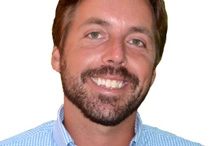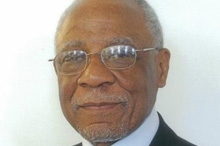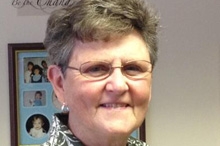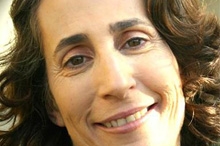Champions of Change Blog
Communication in Crisis
Posted by on June 19, 2013 at 4:46 PM EDT Justin Auciello is being honored as a Champion of Change for the leadership he demonstrated in his involvement in response and recovery efforts following Hurricane Sandy.
Justin Auciello is being honored as a Champion of Change for the leadership he demonstrated in his involvement in response and recovery efforts following Hurricane Sandy. It is a tremendous honor to be recognized as a White House Champion of Change. Altruism is a trait that is deeply ingrained in my personality, and I firmly believe that I was born to serve my community and inspire others to do the same.
Since childhood, I have always been fascinated by news. I have vivid memories of hearing the fire siren sound in my town, hopping on my bike, and chasing down the fire trucks. I would find out what was happening and return home to tell my parents. I always wanted to "be in the know." Along with news, other passions have always included community service and understanding how communities function. It is thus no surprise that I pursued city planning and journalism as a career, as both are interconnected and allow me to inform and assist communities -- both physically and virtually. Naturally, with the advent of social media in the beginning of the 21st century, the nature of news began to change.
When I first got involved with social media in 2003, I saw unlimited potential in interaction, news gathering, and community building, as ordinary people now had the ability to gather and report news. I call it "the democratization of media." Creating Jersey Shore Hurricane News (JSHN) on August 23, 2011 was a natural extension of my years of citizen journalism. In my own barrier island community of South Seaside Park NJ, panic over Hurricane Irene's potentially destructive impacts was beginning to simmer, and I knew that people were feeling this same anxiety throughout New Jersey. I felt a calling to create a "pop-up" news outlet on Facebook in an effort to supply reliable, real-time news as well as serving as a platform for collaborative bottom-up reporting from ordinary citizen contributors. Social media carries so much value during breaking news situations, especially since many people are without power and rely on their smartphones. Its value also resides in its ability to deliver news almost instantly. I saw this as a prime opportunity to democratize media in New Jersey: empower citizens and give them the tools to be on-the-ground journalists.
My vision was to provide a ground swell of accurate information from both personal reporting and newsgathering from all angles -- potential weather impacts, evacuation orders, shelter information, etc. I also wanted JSHN to be a place where people could ask questions and provide ground-truth reports from their locations, a technique known as "crowdsourcing." But understanding the dangers of reporting erroneous information, I knew that I had to be especially careful with tips, by vetting and confirmation information through a variety of journalistic mechanisms.
New Jersey was largely spared from catastrophic impacts from Hurricane Irene. However, with information supplied before, during, and after the storm, JSHN's value was proven. After Irene, JSHN evolved into a real-time news, traffic, and weather platform, with the citizen contributor continuing to be the major source of information.
During Superstorm Sandy, JSHN relayed critical information and squashed rumors in real-time with information gleaned from emergency management officials and a variety of sources, which was then shared by contributors and spread virally throughout the social media world. Since the "contributor culture" was already firmly embedded within the JSHN ethos before Sandy, the citizen reporters were armed with the ability to report what was happening around them during Sandy, supplying valuable news reports that were subsequently vetted through a variety of means before publishing. In addition, people used to service to find water, ice, generators, supplies, etc and in some cases, request rescue from flood waters (the New Jersey Office of Emergency Management was monitoring and dispatched crews to many locations). In the days and weeks after landfall, JSHN became a major humanitarian hub, providing an organized outlet for the dissemination of a variety of recovery news and information -- once again mainly provided by the ordinary citizen. People were even finding photos and other items that had been washed away by the storm surge and posting on JSHN, with many reunited with their possessions through simply power in numbers. Many were inspired and gained hope when JSHN published positive news in the days and weeks after the storm. Today, recovery reporting continues, along with general news. JSHN continues to be a trusted outlet where people continually collaborate and contribute information.
I am proud of how New Jersey residents reported and organized itself during a time of tremendous stress before, during, and after Superstorm Sandy. If used properly, social media can be an incredibly powerful tool that can help countless people remain informed and safe. I remain committed to serving my state by employing innovative news practices and inspiring others to do the same. After all, I am just an ordinary citizen, as is everyone who supplies information. With just a bit of experience and knowledge, you can also serve your community by leveraging the power of social media.
Justin Auciello, 33, is the founder of Jersey Shore Hurricane News, a bottom-up, two-way social media-based news outlet that provides New Jersey residents with news, traffic, and weather reports and serves as a community forum. Auciello holds a bachelor's degree in Government and Politics from the University of Maryland-College Park and a master's degree in City and Regional Planning from Rutgers University's Edward J. Bloustein School of Planning and Public Policy.
Learn more about ServiceCaught Between Systems: Helping Immigrant Children with Incarcerated, Deported, and Detained Parents
Posted by on June 18, 2013 at 3:53 PM EDT Yali Lincroft is being honored as a Champion of Change for her dedication to the well-being of children of incarcerated parents.
Yali Lincroft is being honored as a Champion of Change for her dedication to the well-being of children of incarcerated parents. My involvement with helping children of incarcerated parents began in the summer of 2004 when I was first hired by the Annie E. Casey Foundation to examine the issues surrounding immigrant and refugee families in the child welfare system. The report I eventually wrote and published for the Casey Foundation in 2006, “Undercounted, Underserved: Immigrants and Refugees in the Child Welfare System,” documented the increasing trend of children with incarcerated/detained immigrant parents in the child welfare system. And, my research talking with researchers and policymakers, frontline child welfare workers, attorneys, adoptive parents, foster youth, and the detained parents themselves gave me insights into current practices and policies throughout the U.S. In particular, the stories from children whose worlds were turned upside down because of the deportation of their parents, mothers and fathers who risked everything to be reunited with their children, or undocumented foster youth who but didn’t apply for eligible relief options because their attorney or social worker didn’t know about these options have haunted me ever since.
According to the U.S. Department of Homeland Security, nearly 205,000 parents of U.S. citizen children were deported in the 26 months between July 1, 2010, and September 31, 2012. When parents are detained or deported, often with little warning or preparation time, their children are often left without consistent and permanent caregivers. Currently, there is an estimated 5,100 children nationwide in the child welfare system because their parents are under immigration custody or have been deported. This number is expected to rise to 15,000 in the next five years. Many of these parents will never have a realistic opportunity to be reunified with their children because parents who are deported or in immigration detainment are frequently unable to access services or meet requirements set out by dependency courts to regain custody. Though immigrant relatives may be willing to take custody of a child when the parent is in this situation, they are often turned down by the child welfare system because of their immigration status. As a result, children can be permanently separated from their families. All too often, we hear of heart-breaking stories, like young children who lost their bilingual language ability because they were in English-speaking foster care and now couldn’t communicate with their parents or relatives.
Working with First Focus and SPARC, a project designed to help state child welfare advocates make an even bigger impact, I have been focused on addressing this awkward intersection of immigration, child welfare, and the criminal justice system through state and federal legislation. On September 30, 2012, California Governor Brown signed “The Reuniting Immigrant Families Act” (SB1064 – de León), which became the first act in the country to address family separation issues as a consequence of the current immigration enforcement system. The bill extended the family reunification period for deportees, established working agreements with foreign consulates around child custody cases, provided screening and assessment for eligible immigration relief options, and allowed family members, regardless of their immigration status, the ability to take custody of a child left behind in the deportation process. This bill is being replicated legislatively in Arizona, Illinois, and New York and administratively in many more states. Several pieces of federal legislation addressing this issue have been introduced in partnership with First Focus by Senator Franken, Representative Roybal-Allard, and Representative O-Rourke. Most recently, the massive “Border Security, Economic Opportunity, and Immigration Modernization Act” introduced by the Senate Gang of 8 includes several important modifications impacting state child welfare plans to promote the reunification of detained or removed parents with their children in the child welfare system.
America has the opportunity to fix our immigration system by passing comprehensive immigration reform. It is important in these discussions that the thousands of children and families who have been adversely impacted by this broken system and involved in the child welfare system are taken into consideration during this rare opportunity of reform.
Yali Lincroft is a Policy Consultant for First Focus and a Program Officer with the Walter S. Johnson Foundation. She is also a founding member of the Migration and Child Welfare National Network (MCWNN), a coalition focused on helping immigrant families in the child welfare system. MCWNN is housed at the Jane Addams College of Social Work at the University of Illinois at Chicago.
Learn more about ServiceServing Children of Prisoners Through Passion, Purpose, and Perseverance
Posted by on June 18, 2013 at 3:48 PM EDT Rev. Dr. W. Wilson Goode, Sr. is being honored as a Champion of Change for his dedication to the well-being of children of incarcerated parents.
Rev. Dr. W. Wilson Goode, Sr. is being honored as a Champion of Change for his dedication to the well-being of children of incarcerated parents. The last 13 years have been a journey. I put my energy and creative leadership into an effort to rescue children of prisoners. For in a real sense I saw myself in all of these children. I, too, am the son of an incarcerated parent and I have felt an obligation to work on behalf of this invisible population. And I believe the route of my earlier journey—in public service as chairman of the Public Utility Commission, managing director of the City of Philadelphia and then a two-term mayor—prepared me to lead Amachi to success.
All I really wanted to do was to help these children. So I worked tirelessly the first two years of the program to ensure that we succeeded in Philadelphia. Soon Amachi became a national movement replicated in every state with the creation of at least 350 Amachi-modeled programs that have served more than 300,000 youth.
What began as a partnership between faith-based organizations which provided the children and administrative oversight, now has expanded to include volunteer mentors from all sources. The Amachi program (now Amachi, Inc.) has expanded the population of youth it serves as well. Amachi provides training and technical assistance to mentoring programs who serve children impacted by incarceration, high-risk youth, and youth from military families.
In 2012 Amachi completed a three-year $17.8M grant from the U.S. Office of Juvenile Justice and Delinquency Prevention (OJJDP) to develop statewide mentoring coalitions in 38 states through September 30, 2012. At the completion of the project, Amachi met or exceeded all of its goals with the creation of 18,287 matches, 1,107 partnerships, 38 statewide coalitions, and 259.70 FTEs. In addition, in 2011 Amachi received a three-year $3.0M grant from OJJDP to enhance and expand mentoring services to at risk youth, including youth from military families and those impacted by incarceration.
Amachi has developed an effective intermediary model. The organization receives federal, state, and private grant funding, and works with subgrantees to carry out the work. The contracts with these subgroups permit Amachi to hold each group accountable for the deliverables. If the subgroup fails to produce at the level agreed to, contracts can be decreased so that the group can work at a more comfortable level. This model has proven to be an effective practice that has resulted in overall success for the program.
Rev. Dr. W. Wilson Goode, Sr., is President of Amachi, Inc., a non-profit headquartered in Philadelphia, PA that is dedicated to providing training and technical assistance to mentoring programs nationwide with a focus on those who serve children impacted by incarceration, high-risk youth, and youth from military families.
Learn more about ServiceChildren of the Incarcerated: A Priority in “Hour” World
Posted by on June 18, 2013 at 3:28 PM EDT Sister Tesa Fitzgerald is being honored as a Champion of Change for her dedication to the well-being of children of incarcerated parents.
Sister Tesa Fitzgerald is being honored as a Champion of Change for her dedication to the well-being of children of incarcerated parents. There are some experiences that just sear into your head. They are memories that don't change or diminish and help define the values that guide you. The journeys I have shared with so many children of incarcerated parent are among those types of memories and they are often characterized by complicated emotions and abiding love.
Like the time when I brought a mother who had just been released from prison after 5 years for a drug trafficking charge to reunify with the son who was being cared for across the country by her mother. Or, the time an incarcerated mother begged me to find her infant son, who was being cared for by a friend who stopped answering letters or phone calls. Or when a mother who had been in/out of prison multiple times died suddenly, leaving her 11 year old twin sons in our care. As witness to these most meaningful moments, I have confirmed my wholehearted belief in several enduring principals that have shaped our work and our perspective: every person has the power to change; the undeniable and lasting love between a parent and child can be transformational; and the greatest gift you can give a child is a stable family of his own.
Our work at Hour Children started 26 years ago when we began caring for the children of women who were completing their sentences at the Bedford Hills Correctional Facility, NYS’ only maximum security prison for women. As these vulnerable - often very young - mothers were released, we turned their babies over to them, but soon realized that our efforts were incomplete; these women didn’t have skills to parent these children - indeed, almost without exception, they were barely able to take care of themselves and had limited - or no- positive parenting role models from their own childhoods. From the needs of those first women, Hour Children was born and we have worked over the years to provide women with the skills, resources and support they have needed to become the kind of parents – and people – that their children need them to be. The organization’s mission is to end the cycle of intergenerational incarceration and we believe that isn’t possible without fully engaging the mother in her role as a parent –the more stable and loving the environment she creates, the more likely her child is to feel hopeful about his own future and avoid the self-defeating mistakes of his mother. And the mother benefits from accepting her parental role, as well – indeed, I can hardly count how many times I’ve heard the expressions “my kids raised me” or “my kids have taught me more than I ever taught them.”
Our work almost always starts in the prison and we are involved in some way in almost every women’s prison within NYS. We work hard to maintain – and in some cases, to develop – the bond between a mother and her child, despite the separation imposed by prison, and to create opportunities for incarcerated parents to acquire and develop the skills they need to meet the challenges of parenting, especially given the trauma their family has likely endured up to this point. To that end, it is essential that we address some basic, practical impediments to this effort. For example, DOCCS programming mandates mean that an incarcerated woman will be assigned to sweep a prison floor instead of being assigned to a parenting class. It doesn’t matter that she has 4 children on the outside waiting for her, it doesn’t matter if she lost every child she had but the child she is now pregnant with to the “system,” it doesn’t matter that she lost her own childhood to a drug addicted mother from whom she inherited this legacy of incarceration – her “work assignment” is to sweep floors. How can that make sense, especially when we know that this essential intervention can have the potential to save this woman’s child, as well as this woman, herself?
The relationship between an incarcerated or formerly incarcerated mother and her child is complicated. There are feelings of guilt, anger, betrayal, fear, shame on both sides and those feelings require attention, time and support to resolve. That resolution, however, needs to be allowed and even encouraged to happen, because I have seen – time and again – that the mother who hurt the child so deeply through her behavior or lack of attention is the only person who is really able to heal that child….and that is cathartic for them both. But, given the tumult of their lives, this cannot happen without the loving and practical support of many that begins as soon as that parent first becomes involved in the criminal justice system.
All that leads me back to my earlier thoughts about memories. As a community of citizens, what is our role in ensuring that children of the incarcerated have a collection of enduring, positive memories that they can call on when they need strength or peace? How can we help create and nurture families that provide children impacted by incarceration with this essential resource? At Hour Children we have some answers: support prison visitation by providing affordable and regular transportation to/from prisons and a welcoming environment for the visit to take place; provide opportunities for parents to connect with and support their children in addition to visits, including telephone calls, letters and televisiting sessions; develop and present meaningful parenting education classes that address relevant and timely issues and allow the inmate to be available to take them; plan for the practical challenges of an offender’s release – where they will live, who they will live with, how they will obtain a job, how will they reunify with their child; create meaningful, worthwhile and realistic training and skill development opportunities both inside the prison setting and upon release; hire an ex-offender and pay them a living wage, so that they have the means to support their children; and provide the emotional support that reintegration demands for both the parent and the child as a mentor, a friend, a donor or an advocate for this cause. We invite you to learn more about Hour Children and the work we are doing by visiting our website (www.hourchildren.org ). At the very least, learning more about our families will create some of those transformative and lasting memories for YOU!
P.S. The mother and son that reunited in the airport are doing great. She works full-time and is enrolled in college. The son is an 8th grader, with good grades, lots of friends and a love of basketball! The child we found in the heart of Brooklyn lived at Hour Children for 6 years until his mother was released from prison. He just graduated, magna cum laude, from college! The twin boys were adopted by a nun who has been closely connected to Hour Children since its inception. They are 16 now (not driving yet, thank goodness!) and very much a part of Hour family!
Blessings!
Sister Tesa Fitzgerald is the Executive Director of Hour Children.
Learn more about ServiceInvisible No More
Posted by on June 18, 2013 at 3:23 PM EDT Nell Bernstein is being honored as a Champion of Change for her dedication to the well-being of children of incarcerated parents.
Nell Bernstein is being honored as a Champion of Change for her dedication to the well-being of children of incarcerated parents. When I learned that the White House would be holding an event focused on the needs of children of incarcerated parents, I had to catch my breath. Ten years ago, when I wrote my book on the subject, All Alone in the World: Children of the Incarcerated, I could not even have imagined such a convening. Numerous as they were, these children were almost entirely overlooked by the multiple systems that take charge of their lives once a parent is incarcerated. As I researched the book, talking to children and their families across the country, I met a group of visionaries – dedicated advocates who were doing all they could to make sure that these children were not overlooked. When I learned that I would be joining many of these, my personal heroes – Liz Gaynes and Emani Davis at the Osborne Association in New York; Carol Burton at Centerforce in California; Dee Ann Newell at Arkansas Voices for the Children Left Behind and others whose passion and dedication has led the way for these children to be seen and heard – I thought I might be dreaming.
Today, roughly 1.7 million children have a parent or parents in prison, and 2.4 million have a parent in either jail or prison. One in ten American children has a parent under criminal justice supervision – in jail, prison, on probation or parole – on any given day. Despite these astonishing numbers, these children are only now beginning to be recognize and their needs addressed.
For the past ten years, I have worked as the coordinator of the San Francisco Children of Incarcerated Parents Partnership (SFCIPP), a coalition of service providers, representatives of government bodies, advocates and others convened by the Zellerbach Family Foundation. Together we developed and advocate for a Bill of Rights for Children of Incarcerated Parents. We are joined in this work by others all across the country who have found in the Bill of Rights a banner under which they and the children could gather and make their voices heard. Together, SFCIPP has worked towards and achieved goals such as a police protocol that keeps children safe and acknowledged when a parent is arrested; the One Family Initiative, which has made the San Francisco County Jail one of the first in the country to have a written policy giving children the opportunity for meaningful contact visits with their parents, rather than struggling to reach them through glass on a scratchy telephone; and Project WHAT, which supports teenagers and young adults who have experienced parental incarceration in speaking to audiences across the country on their own behalf in order to inform the policies and practices that affect them, and in developing training curricula for teachers, social workers, and the various other agencies whose workers will interact with children whose parents are behind bars. Across the country, our allies are doing the same and more.
Children of prisoners have a daunting array of needs. They need a safe place to live and people to care for them in their parents’ absence, as well as everything else a parent might be expected to provide: food, clothing, medical care. But beyond these material requirements, young people themselves identify less tangible, but equally compelling, needs. They need to be told the truth about their parents’ situation. They need someone to listen without judging, so that their parents’ status need not remain a secret. They need the companionship of others who share their experience, so they can know they are not alone. They need contact with their parents—to have that relationship recognized and valued even under adverse circumstances. And—rather than being stigmatized for their parents’ actions or status—they need to be treated with respect, offered opportunity, and recognized as having potential.
For these needs to be met – these rights to be recognized – they need first and foremost to be acknowledged and heard. That the White House is creating a forum that will make this possible is a powerful sign that the nation is ready to step up and listen to a group of children whose dazzling potential demands our support.
Nell Bernstein is an author and Coordinator of the San Francisco Children of Incarcerated Parents Partnership.
Learn more about ServiceGoing Upstream to Help Children
Posted by on June 18, 2013 at 3:10 PM EDT Gail T. Smith is being honored as a Champion of Change for her dedication to the well-being of children of incarcerated parents.
Gail T. Smith is being honored as a Champion of Change for her dedication to the well-being of children of incarcerated parents. I am honored beyond words to be to White House Champion of Change. Nearly 30 years ago, during law school, I attended the National Conference on Women and the Law. It changed my life. Attorney Ellen Barry organized an amazing panel of mothers who spoke about the impact their incarceration had on their children. One mother described her toddler son, who at the time she was arrested, was walking and just beginning to put words together in sentences. When she finally had a visit, after a separation of many months, he had regressed to an earlier stage of infancy. He lost his ability to walk and could not speak a word, but stared straight ahead, drooling. He survived that separation trauma because his mother was able to get into a community program where he could live with her while she served her sentence. After many months of work, the mother got her son back on track. Most families don’t have that opportunity. Most babies born to mothers in jail and prison are separated within a day or two. They can never recover that lost time for mother-infant bonding, which forms the keystone of our human development and our family relationships.
Children need their parents. They also need immediate care when their parents can’t be there. I cannot overstate my admiration and gratitude for the millions of caregivers who step up and take responsibility for children whose parents are incarcerated. Caregivers stretch their scarce resources to provide for the children. Many strive to make sure that the children know their parents still love them. The organization I founded, CLAIM (Chicago Legal Advocacy for Incarcerated Mothers) has helped thousands of families with short-term and court-ordered guardianships. We represent mothers and guardians in court and we seek out resources for the grandmas, aunties, and others who struggle financially and personally with parents’ absence.
We promote community sentencing instead of prison, child-friendly visiting conditions, and improved policy. We work to create positive systemic change, side by side with allies locally and around the country. Our friend Warnice Robinson spoke out about the need for sentencing programs where moms convicted of nonviolent offenses and their young children can remain together. She was the first to speak publicly about the torture and humiliation of being shackled in full restraints when she was taken from prison to the hospital to give birth. Although she served time for shoplifting, she went through labor with one wrist and one ankle shackled to her hospital bed. Because of her courage in raising this issue, we were able to make Illinois the first state in the U.S. to ban the practice of shackling women in labor. Since then, 18 states and the Federal Marshals have outlawed restraints during labor, and we are moving to protect women and infants from this dangerous practice throughout pregnancy.
When I think about what vulnerable families are facing today due to mass incarceration, I can’t help remembering the familiar parable sometimes attributed to Saul Alinsky, but likely adapted from a story by Irving Zola:
A group of people are standing at a river bank and suddenly hear a baby crying. Shocked, they see an infant struggling in the water. One person immediately dives in to rescue the child. But right away another baby comes floating down the river, and then another! People continue to jump in to save the babies and then see that one person has started to walk away from the group still on shore. Accusingly they shout, "Where are you going? We need everyone available to help save these drowning babies!" The response: "I'm going upstream to stop whoever's throwing babies into the river.”
Mothers and fathers go to prison for reasons that are complex and intertwined: poverty, childhood abuse and intimate violence, addiction when people self-medicate against the continued trauma, and the lack of resources: mental health services, treatment for addiction, quality education, affordable housing, and living-wage employment. The “War on Drugs” and disproportionate arrests of Black and Latino family members wreak destruction on poor families and communities.
We as a nation could scale back incarceration. Instead of prisons, we could focus our resources on restorative justice practices and community resources “upstream”. Until that day, we can continue to try to save the babies who will be carried down our national river of incarceration and family destruction.
Gail T. Smith is the founder of CLAIM (Chicago Legal Advocacy for Incarcerated Mothers), which provides legal aid, client education and public advocacy to benefit mothers and their families.
Learn more about Service
- &lsaquo previous
- …
- 57
- 58
- 59
- 60
- 61
- 62
- 63
- 64
- 65
- …
- next &rsaquo
White House Blogs
- The White House Blog
- Middle Class Task Force
- Council of Economic Advisers
- Council on Environmental Quality
- Council on Women and Girls
- Office of Intergovernmental Affairs
- Office of Management and Budget
- Office of Public Engagement
- Office of Science & Tech Policy
- Office of Urban Affairs
- Open Government
- Faith and Neighborhood Partnerships
- Social Innovation and Civic Participation
- US Trade Representative
- Office National Drug Control Policy
categories
- AIDS Policy
- Alaska
- Blueprint for an America Built to Last
- Budget
- Civil Rights
- Defense
- Disabilities
- Economy
- Education
- Energy and Environment
- Equal Pay
- Ethics
- Faith Based
- Fiscal Responsibility
- Foreign Policy
- Grab Bag
- Health Care
- Homeland Security
- Immigration
- Innovation Fellows
- Inside the White House
- Middle Class Security
- Open Government
- Poverty
- Rural
- Seniors and Social Security
- Service
- Social Innovation
- State of the Union
- Taxes
- Technology
- Urban Policy
- Veterans
- Violence Prevention
- White House Internships
- Women
- Working Families
- Additional Issues

